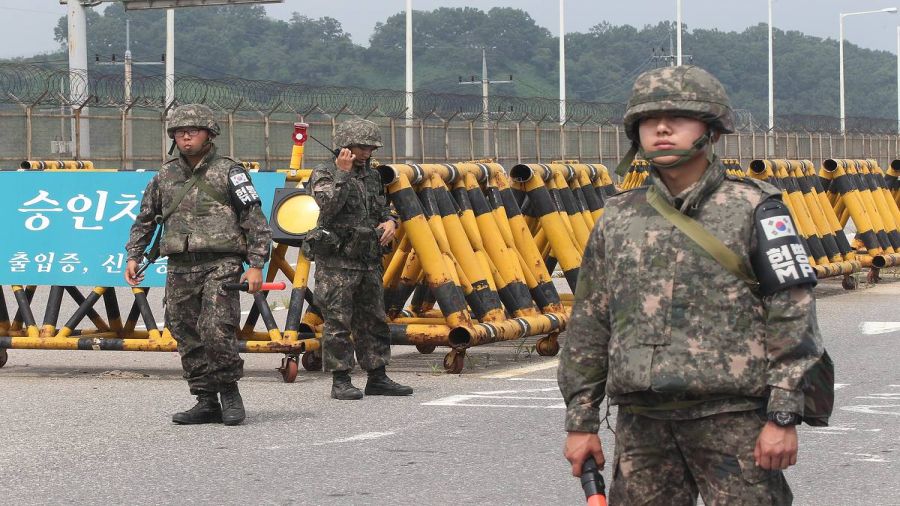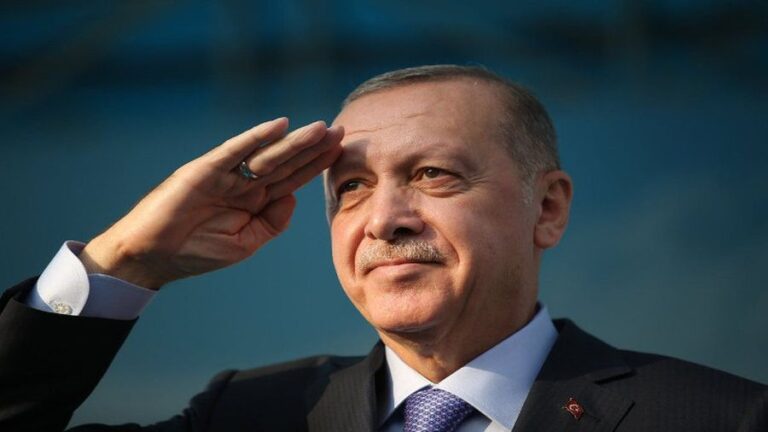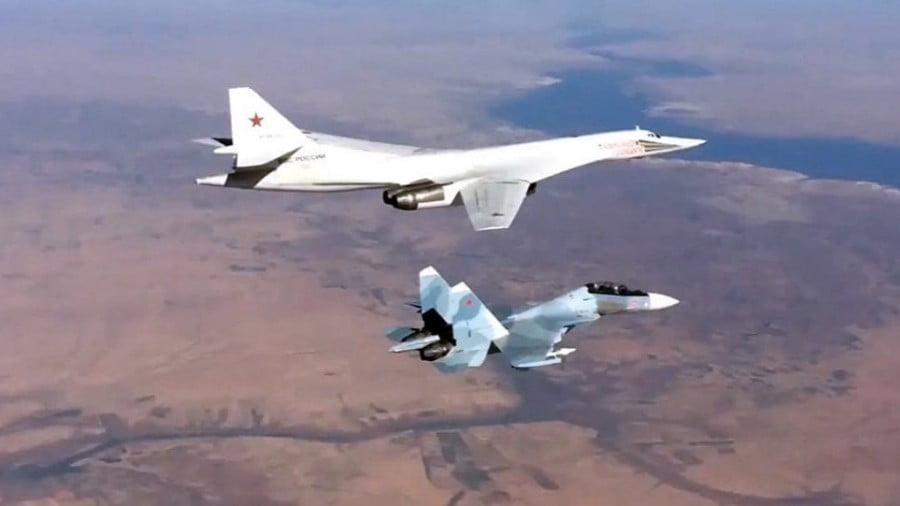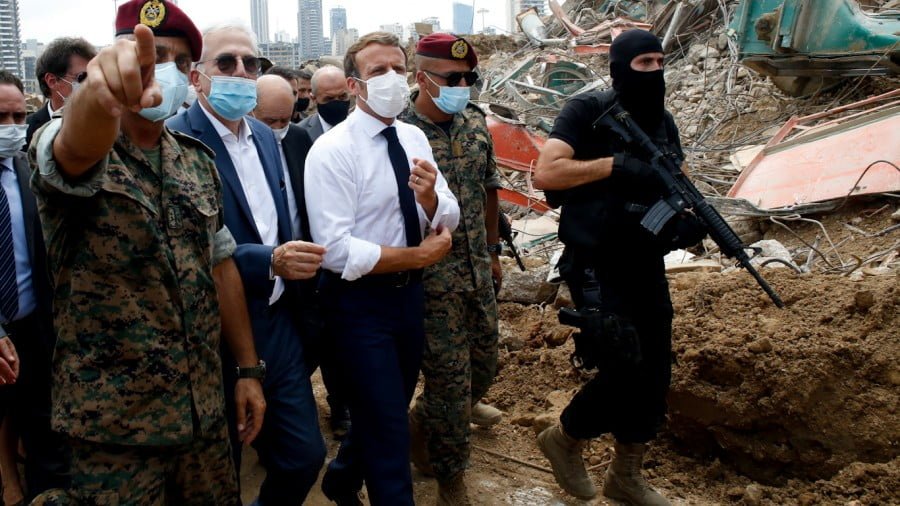Conflict Between North and South Korea from Mid-June to Mid-July 2023 from one Rocket to the Next
The author of the previous issue of this digest writes that the usual pattern of escalation surrounding the USA and South Korean military exercises has given way to news events since the beginning of June.
On June 15, 2023, in response to a large-scale South Korean and USA live-fire exercise just 25 kilometers south of the inter-Korean border, North Korea launched two unspecified short-range ballistic missiles from the Sunan-guyŏk area toward the Sea of Japan. Both rockets flew about 780 kilometers each before hitting the water. On the same day, a spokesman for the North Korean Defense Ministry told the Korean Central News Agency (KCNA) that the US and South Korea were “conducting hostile field training exercises against our Republic on a daily basis.” He recalled that large-scale firing had been conducted five times: May 25, June 2, 7, 12, and 15, and “our armed forces will consistently respond to every kind of demonstrative action and provocation by our enemies.”
The launch was condemned by everyone in the West, including South Korean President Yoon Suk-yeol, who stated on his Facebook page that South Korea would respond “resolutely and without hesitation” to the North’s provocations.
Republic of Korea (ROK) National Security Advisor Cho Tae-yong, National Security Advisor Jake Sullivan, and Akiba Takeo, Secretary General of National Security Council of Japan also issued a joint statement in Tokyo on June 15. Condemning North Korea’s missile launches, they committed to increase efforts to maintain peace and security in the Indo-Pacific area, calling these launches “clear violations” of many UN Security Council resolutions.
The USS Michigan, the Ohio-class nuclear-powered submarine, docked at the Busan Naval Base on June 16 with around 150 Tomahawk cruise missiles on board. In addition, four B-52 strategic bombers and about 200 troops were redeployed the previous day from Minot Air Force Base, North Dakota, to Andersen Air Force Base on Guam. It was the first time the United States had sent a vessel of this type to South Korea since October 2017.
The Ohio-class boats are the largest ballistic missile submarines currently operated by the U.S. Navy. They are 170 meters long, 12.8 meters wide, and have a displacement of 18,750 tons submerged. The range in autonomous mode is 7,000 kilometers. They are capable of carrying 24 Trident-2 intercontinental ballistic missiles with a range of up to 11,300 kilometers. The United States Navy operates 14 similar submarines.
In response, on June 24, Kang Jin Song, an international affairs analyst of the DPRK, published an article in the Korean Central News Agency (KCNA) titled “The Korean peninsula is not an operational theater of the U.S. strategic assets.” “…such reckless expanded deployment of strategic assets targeted at a belligerent country on the Korean peninsula, where a touch-and-go nuke-for-nuke dynamic structure exists, presupposes irretrievable catastrophic consequences to peace and security in the region and the rest of the world.” The Michigan’s arrival at the Port of Busan, in the author’s perspective, is a dress rehearsal for the upcoming permanent deployment of US strategic nuclear submarines on the Korean Peninsula. It’s only a matter of time, to ensure that North Korea ” takes more preemptive defense measures to protect the security interests of the state with clear actions which the hostile forces can perceive… The U.S. should not forget that the Korean peninsula is too dangerous for its strategic assets to come and go at will and that such moves will only result in triggering off the DPRK’s measures for bolstering up its nuclear force which the U.S. is most unwilling to see.”
The Institute for American Studies of the Foreign Ministry of the DPRK published a research report on the anniversary of the outbreak of the 1950-53 Korean War, on June 25, claiming that it once again provides a complete picture of the aggressive war against North Korea (DPRK) provoked by the USA in the 1950s and demonstrates the aggressive nature of the US, which is still frantically attempting to launch a nuclear war today.
The report emphasized that the world’s largest-scale joint military exercises between the U.S. and South Korea have taken place more than 40 times, and “the current U.S. ruling forces in the White House are more openly pursuing the inveterate attempt for mounting a preemptive nuclear attack on the DPRK in cahoots with the south Korean puppet regime led by Yoon Suk-yeol hell-bent on sycophancy toward the U.S.” As a result, “such bellicose moves of the U.S. have pushed the military tensions on the Korean peninsula and in Northeast Asia already plunged into an extremely unstable situation closer to the brink of a nuclear war,” which, given the peninsula’s geopolitical importance, “will rapidly expand into a world war and a thermonuclear war unprecedented in the world. This will entail the most catastrophic and irreversible consequences to peace and security on the Korean peninsula and in Northeast Asia and the rest of the world.”
On July 10, a spokesman for the Ministry of National Defence of the Democratic People’s Republic of Korea (DPRK) issued another press statement as the US Department of Defense publicly revealed its intention to send a strategic nuclear submarine armed with nuclear weapons to Korean Peninsula operational waters for the first time since 1981. The US actions were described as “the most undisguised nuclear blackmail against the DPRK and its neighboring countries and a grave threat and challenge to the regional and global peace and security.”
In addition, the statement noted that RC-135, U-2S and RQ-4B, strategic reconnaissance planes and reconnaissance drone belonging to the U.S. Air Force “flew over the East and West seas of Korea in turn for eight straight days from July 2 to 9 to conduct provocative aerial espionage on the DPRK’s strategic interior.” Furthermore, a US Air Force strategic reconnaissance plane repeatedly violated the DPRK’s airspace and flew several kilometers deep into the country’s territory. In this context, Washington was reminded of past incidents when the DPRK shot down such reconnaissance planes, and hinted that such a thing could happen again.
South Korea’s Joint Chiefs of Staff have denied North Korea’s claim that U.S. reconnaissance aircraft have repeatedly violated its airspace: U.S. Air Force flights around the Korean Peninsula are part of regular air surveillance, “(We) sternly urge an immediate halt to acts that create tension through such false claims.”
Later on July 10, the Korean Central News Agency (KCNA) released a statement by Kim Yo-jong, Deputy Department Director of the Publicity and Information Department of the Workers’ Party of Korea, who said that “invasion of reconnaissance assets of hostile countries with a detection radius of more than 240 nautical miles” was “clearly a severe violation” of the North’s “sovereignty and security.” According to Kim Yo-jong, a US reconnaissance aircraft entered the airspace over the North Korean exclusive economic zone (EEZ) from the east coast at around 5 a.m. After Pyongyang had scrambled its own fighter jets into the air, the aircraft exited the area, reappearing at 8:50 a.m. 400 kilometers east of Kosong, Kangwon Province. Kim commented that the Army had already sent a serious warning to U.S. troops: “North Korea “will not directly respond to the U.S. military’s spying (on us) outside of our economic zone.” “We repeatedly warn that we will respond with clear and decisive action if they cross the maritime military demarcation line and infringe on our economic zone again.”
On June 11, Kim Yo-jong again issued a press statement responding to denials by the South Korean Defense Ministry, which should shut up and stay out of North Korean (DPRK) and U.S. affairs. In addition, she stated that, from 5:15 a.m. to 1:10 p.m. on July 10, a U.S. Air Force strategic reconnaissance aircraft had breached the airspace over the DPRK’s economic zone eight times without authorization. If this behavior continues, “it will be a very critical flight for U.S. forces,” the statement continued According to Russian military expert Vladimir Khrustalev, the US Air Force’s activity outside the universally recognized 12-mile boundaries from the DPRK coast with full and absolute sovereignty and over the DPRK’s 200-mile exclusive economic zone will now be considered hostile activity and will be dealt with combat.
The South, however, reiterated that flying in North Korea’s EEZ would “not be an intrusion” since a country’s EEZ is “a place where there is freedom of navigation and flight.” According to South Korea’s Joint Chiefs of Staff (JCS) spokesperson Lee Sung-jun, “Pyongyang’s claims may be part of “internal plans” to “build up a pretext for yet another provocation.” U.S. State Department spokesperson Matthew Miller also urged North Korea to refrain from escalating its actions and reiterated that the U.S. remains open to dialog with Pyongyang.
Park Won-gon, a professor of North Korean studies, said Pyongyang rarely makes three statements on the same issue in less than 24 hours and noted that Kim essentially corrected a defense ministry colleague by correcting that the plane had been flying over the exclusive economic zone rather than the country’s airspace.
Nonetheless, North Korea’s accusations against US spy planes have aroused concerns about whether it regards the airspace over the EEZ as an air defense identification zone. The zone is not part of territorial airspace, but it exists to allow foreign aircraft to identify themselves and avoid collisions.
Experts, however, drew attention to something else. In contrast to the North’s longstanding use of the term “South Korea” or a “South Korean puppet,” the “first sister” used South Korea’s full official name, the “Republic of Korea,” followed by speculation that “the North may be seeking to deal with South Korea as a separate nation in state-to-state relations.” And, rather than professing to enhance inter-Korean relations, pursues “confrontational coexistence” with South Korea.
Under the Inter-Korean Basic Agreement signed in 1991, inter-Korean ties were defined as a “special relationship” rather than a state-to-state relationship. This method has been used in the past, and it is no accident that the Ministry of Reunification, rather than the Ministry of Foreign Affairs, is in charge of South-North ties under this paradigm.
North Korea launched the Hwasong-18 long-range ballistic missile toward the Sea of Japan on July 12 at around 10 a.m. The launch was conducted from the outskirts of Pyongyang. The range of flight along the high-altitude trajectory is 1,001.2 km, but when calculated along the typical ballistic trajectory for missiles, it will be closer to 15,000 km. The first stage was released at a conventional angle, just like in the April test, but the second and third stages were launched on an elevated trajectory. The maximum altitude is 6,648.4 kilometers, according to the KCNA. The flight lasted 74 minutes and 51 seconds. The collision site is located outside of Japan’s EEZ, 550 kilometers east of the Korean Peninsula.
According to Chang Young-keun, head of the missile center at the Korea Research Institute for National Strategy, the apogee of the July test was about twice the height recorded in April, and the longest flight time of 74 minutes and 51 seconds for a North Korean long-range missile shows clear progress in acquiring heat-resistant materials used for the rocket nozzle neck.
According to the KCNA, Kim Jong-un personally oversaw the launch while being accompanied by his wife, but without their daughter this time, in order to “resolutely deter risky military provocations by hostile forces and reliably protect the security of our state and the peace of the region from the catastrophe of nuclear war.” The launch was aimed at once again confirming the technical reliability and safety of the new type of ICBM. “The missile had to fly by the way of standard ballistic flight in the first stage and by the method of high angle in the second and third stages, taking into account the safety of adjacent states and the safety of multi-stage separation while flying in territorial airspace. The technical specifications of all missile systems within the maximum range needed to be confirmed, and these objectives were accomplished.
Kim Jong-un emphasized during the launch that “the current circumstances require that all efforts be made more intensively to realize the line of strengthening the nuclear war deterrent force,” and “there will be no change and no wavering in the strategic line and course of our Party and the government of our Republic, ready to persistently push forward the development of more advanced, effective, and reliable weapon systems.” The North Korean leader further stated that “the series of powerful military offensives will continue until the U.S. imperialists and their South Korean puppets recognize the shameful defeat of their hostile policy toward North Korea (DPRK) and abandon it.”
In response, President Yoon Suk-yeol, who is at the NATO summit in Vilnius, warned that North Korea will be made to pay for its illegal ballistic missile launch. Furthermore, Yoon directed that US pledges to “extended deterrence” be strengthened through the Nuclear Consultative Group (NCG), which Yoon and US President Joe Biden agreed to establish to discuss nuclear and strategic planning. North Korea, on the other hand, was warned that “the Kim Jong-un regime will face an increasingly dark future the more it obsesses over its reckless nuclear adventurism in neglect of its people’s livelihoods.”
South Korean President Yoon Suk-yeol, Japanese Prime Minister Fumio Kishida, Australian Prime Minister Anthony Albanese and New Zealand Prime Minister Chris Hipkins condemned the launch on July 12, saying the DPRK’s nuclear and missile programs would only strengthen the international community’s resolve to pursue the North’s complete denuclearization.
The chairmen of the Joint Chiefs of Staff (JCS) of the South Korean, U.S., and Japanese armed forces, Generals Kim Seung-kyum, Mark Milley, and Yoshihide Yoshida, also strongly condemned the launch and emphasized the importance of trilateral cooperation in combating threats. G7 foreign ministers joined the chorus of condemnation, calling it a blatant violation of United Nations Security Council resolutions and calling for a “strong and unified response” from the UN Security Council, as well as both major political parties in South Korea. Conservatives highlighted that “despite the previous administration’s unilateral generosity,” “North Korea has not changed at all,” while Democrats stated that “armed provocations cannot be justified for any reason.”
As for the motives behind the launch, Shin Jong-woo, a senior analyst at the Korea Defense and Security Forum announced that “after the failed launch of a spy satellite, the North Korean regime seems to be trying to turn the tide by launching an intercontinental ballistic missile, a bargaining chip to pressure the U.S.,” and is doing so ahead of the 70th anniversary of the signing of the armistice that ended the 1950–53 Korean War on July 27, celebrated in North Korea as Victory Day. Shin also mentioned the North’s progress in producing solid-fueled missiles, which would obviously pose a bigger threat to Seoul.
A joint exercise between South Korea and the US was carried out over the Korean Peninsula on July 13. They involved South Korean F-15K fighters, U.S. B-52H strategic bombers and F-16 escort fighters. It is said that they have tested their ability to coordinate, interoperate, and carry out joint actions using the theory of extended deterrence.
On the same day, an emergency meeting of the UN Security Council was held, during which (apparently in an attempt to shift the position of China and Russia), Khaled Khiari, Assistant Secretary General Middle East, Asia and the Pacific, said that, as it turned out, the North Korean missile had fallen in the exclusive economic zone of Russia.
But more importantly, Kim Song, Permanent Representative of the Democratic People’s Republic of Korea to the United Nations, attended the meeting for the first time since 2017, stressing that the launches were made in accordance with the country’s right to self-defense and did not affect the security of any neighboring country. He echoed the leadership’s message that the joint U.S.-South Korean military field training exercises were aimed at invading North Korea, which he said would lead to a nuclear war on the Korean Peninsula.
For the rest, the meeting predictably ended with nothing, not even a vote. The U.S. representative noted: “It is alarming, albeit hardly surprising that we find ourselves back in the council responding to yet another unlawful DPRK intercontinental ballistic missile launch,” pointing out that North Korea has already launched four ICBMs this year and calling on “all council members to join us in denouncing the DPRK’s unlawful behavior, to fully implement all Security Council resolutions in order to curb the DPRK’s generation of revenue for its WMD and ballistic missile programs.”
China’s representative spoke in response: “China has taken note of the DPRK’s recent launch. Meanwhile, we are also concerned about the heightened military pressure and repeated dispatches of strategic weapons by a certain country to carry out military activities on the Korean Peninsula.” He noted that the U.S. and other countries have long viewed North Korea as a security threat and have been obsessed with it, while the North Korean legitimate security concerns have never been accounted for.
The Russian envoy to the U.N. responded similarly: “we must once again draw attention to the actions of the U.S., the Republic of Korea and Japan who, as part of their concept of so-called extended deterrence, continue to increase the scale of their regional exercises and their military cooperation.” This forms the “context of what is happening” that some Security Council members overlook.
Japan’s representative called for preventing North Korea from being recognized as a nuclear power, while the South Korea’s UN Ambassador lamented the failure of the Security Council to unanimously respond to Pyongyang’s “reckless provocative actions,” insisting on the need to resume open meetings of the Security Council on human rights issues in North Korea.
As can be seen, all sides came up with the expected reaction to the launch, and an attempt by the USA and South Korea to raise the issue at the United Nations Security Council was again defeated by the opposition of Russia and China.
The fact that North Korea has essentially started to view the sea and air space of its exclusive economic zone as being equivalent to territorial waters in terms of reacting to potential provocations is a much more crucial point. It should be noted, this tendency is not limited to North Korea. For example, when North Korean missiles land in Japan’s exclusive economic zone, a similar fuss is made there, albeit there would be no justification unless the missile not simply dropped but managed to “catch” fish there. It is the same pitiful attitude that South Korea used to have to Russian and Chinese aircraft entering their air defense zone as if it were an invasion of territorial seas comes to mind as well.
Especially since, according to some sources, the United States has resumed short-term flights into North Korean airspace, aware that Pyongyang’s missile defense and aviation have little time to respond to such events. The likelihood of North Koreans attempting to shoot down such aircraft not only in its airspace but also over the EEZ has increased significantly. And if that happens, the parties may be on the verge of a dangerous confrontation because the US would be discussing the attack of an American vessel in legally neutral waters, even if it was after a “dive.”
It should be mentioned that a similar situation already happened in 1968 during the incident with the USS Pueblo (AGER-2) spy ship. She entered the territorial waters of the North Korea, but the capture after a chase could take place in neutral waters. Tensions thereafter lasted for a year, and on the North Korean side, it came down to appeals to Moscow in the context of the military assistance treaty.
Therefore, the author takes the North Korean warnings very seriously and hopes that both sides will be prudent, even if that hope is very low. One can recall Pyongyang’s reaction to the US and South Korean joint exercises during détente; it was not long before military tensions were high, and as we see, the temperature of those tensions is steadily rising.







